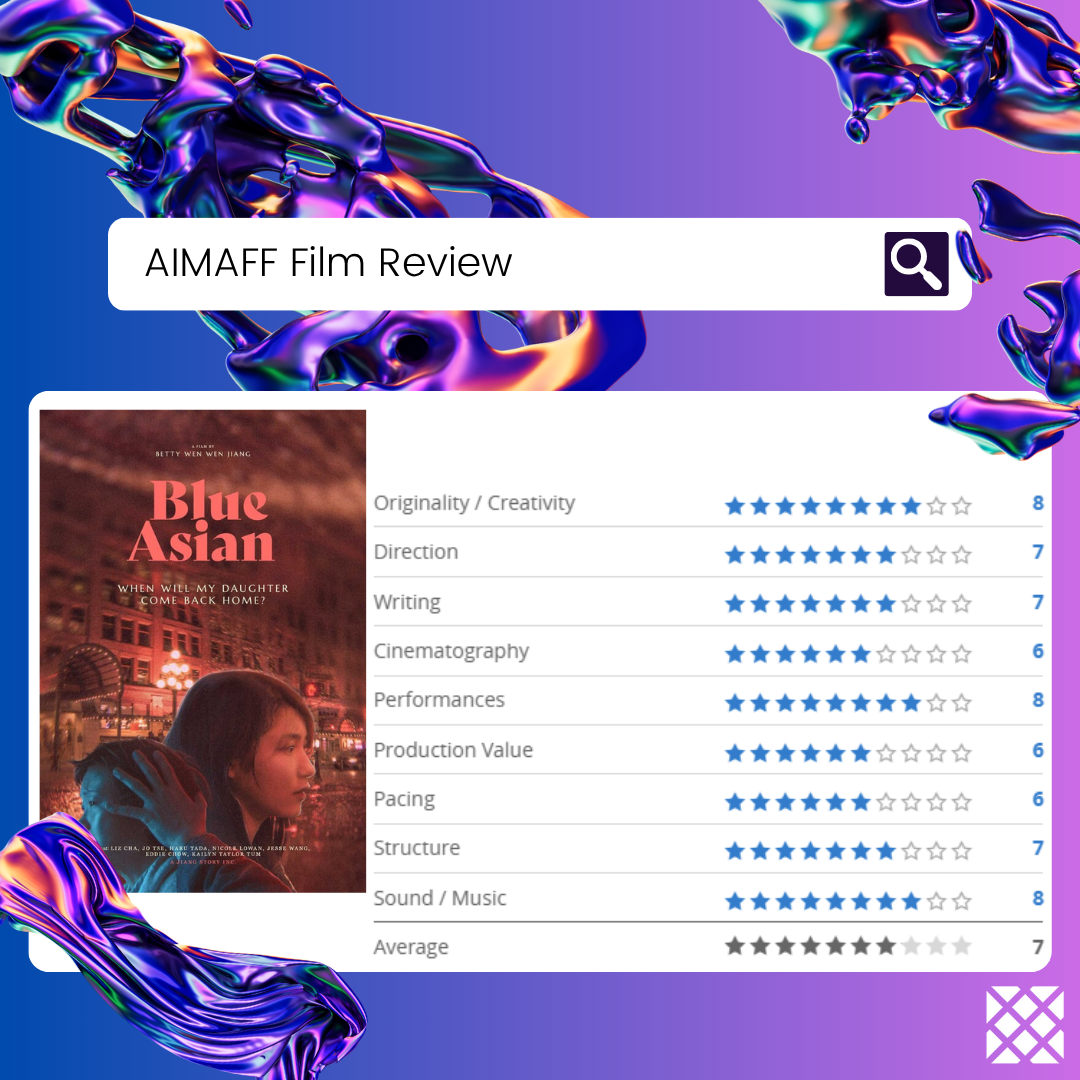‘‘Blue Asian’’ and the Beautiful Sadness of Belonging
How far must one run to escape the gravity of family and what happens when love becomes another word for exile? Betty Jiang’s Blue Asian dives headfirst into that fragile emotional space where rebellion meets regret, where the ache of separation hums louder than any apology left unsaid.
Inspired by Jiang’s own life, Blue Asian paints its pain in gradients of blue the color of bruises, oceans, and melancholy. The story follows a young Asian daughter who bolts from her family, torn between independence and the haunting pull of home. Through her absence, Jiang crafts a mirror for every immigrant household caught between two worlds.
Jiang’s direction is quietly ferocious. She doesn’t shout her truths she lets them tremble on screen. The performances pulse with authenticity, capturing that universal tension between love and suffocation. Every glance feels lived-in, every silence earned. The score ghostly and intimate, lingers like a memory you can’t quite name, while the editing folds past and present into a single, dreamlike current.
There’s a hypnotic, almost theatrical quality to Blue Asian, a film that breathes like a stage monologue whispered into the dark. And yet, Jiang never slips into sentimentality. Her camera, often uncomfortably close, insists we confront each tear and tremor without the mercy of distance. It’s intimate to the point of suffocation a stylistic risk that both strengthens and strains the film. The abundance of close-ups doesn’t let the viewer exhale, it keeps us in emotional lockdown.
Visually, the film isn’t always pristine some frames ache for more polish but the imperfections feel almost poetic.
What makes Blue Asian remarkable isn’t its surface drama, but its pulse: the ache of displacement, the yearning for belonging, and the quiet grief that shadows every immigrant’s dream. Beneath its lyrical melancholy lies a question that refuses to fade, what do we lose when we gain the freedom to leave?
Jiang, both writer and director, transforms personal history into something quietly universal. In Blue Asian, art isn’t just expression — it’s survival. And through its fragile beauty, we’re reminded that even broken trust, even broken homes, still echo with love trying to find its way back.

